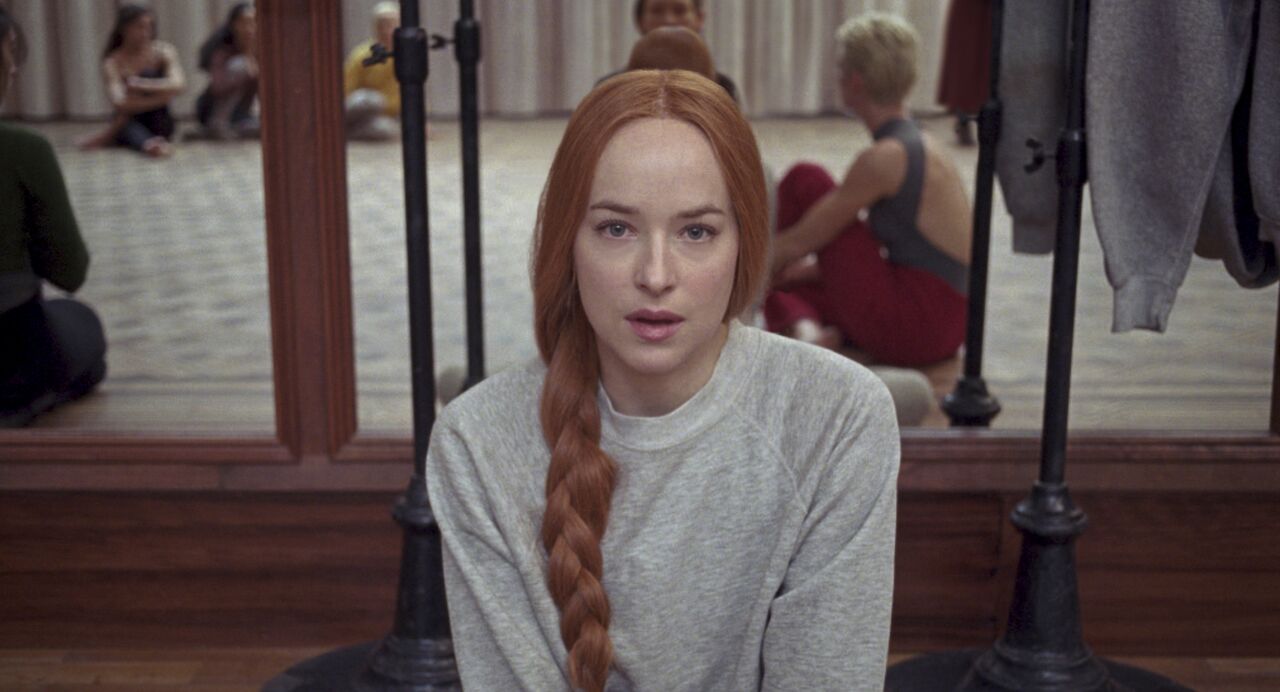Suspiria is a surprising and radical reimagining of Dario Argento’s 1977 film. The story is centred around Susie Bannion (Jessica Harper/Dakota Johnson), a young American, who moves to Germany to attend a prestigious dance school; over time, it becomes apparent that the school is home to something supernatural and sinister.
With the original Giallo being recognised as a cult classic and one of the most influential horrors of all time, many questioned whether the Call Me by Your Name director would be up to the task of remaking it. Though polarizing reviews suggest that many would disagree, I felt Guadagnino to be incredibly successful; this success, however, may be due to the fact that he did everything but ‘remake’ the original. Using only the bare bones of Argento and Nicolodi’s story, the 2018 release feels almost completely unrelated. Drained of colour, but not of style, Suspiria has been reborn.
Written by David Kajganich, the film is split into six acts and an epilogue, adding almost an hour onto the runtime and offering further exploration of the characters and mysteries of Markos’ Dance Company. Guadagnino’s masterpiece builds on typical gendered archetypes and highlights femininity as a powerful force, with the director claiming it to be a “fierce showcase of the female artistic experience.” Though she may be considered strong-willed in the original, Johnson’s Susie is much bolder. She is empowered and confident, despite being ‘the new girl’, she is unafraid to push her body’s limits and be at the centre of attention. Sara (Mia Goth) also has more depth; demanding answers and analysing a missing friend’s diaries, she becomes the prime detective of the story. Tilda Swinton is phenomenal as always, but goes one step further, playing two central characters, Madame Blanc and Dr Klemperer. Klemperer is a man plagued with the guilt of his past and this is only added to as the film goes on; with him being criticised for his ignorance towards women. A contrasting character, Blanc transcends the typical horror villain with moments of warmth and what appears to be motherly love. Throughout the film, Blanc and Susie mirror each other, highlighting the close bond the student and teacher share.
If Argento’s creation was a fairy-tale, then Guadagnino’s is a nightmare. Where Suspiria (1977) felt like a psychedelic, Technicolor fantasy, this seems much more realistic; the palette now consists of flesh tones and muted hues, drawing attention to skin and the human form. Through this emphasis on physique, there is also a greater focus on dance than before, with Damien Jalet’s choreography used as, both, art and a weapon in the film. Somehow, almost every aspect of Suspiria (2018) appears choreographed – each step, glance, hand gesture occurs with purpose. It’s all part of what makes the film so terrifying; the audience are constantly confused whilst the film appears so sure of itself.
The most gruesome scenes had me scratching at my own skin, trying to distract myself from what I was seeing, but, I struggled to turn away. How a film could be so beautifully made, yet so horrifying is striking. A particular scene left me feeling more uncomfortable than any other film has before and will likely cause walk-outs. No longer a slasher film, Suspiria is one of possession and contorted bodies. Fast-cut dream sequences evoke terror and feelings of hypnosis. Flashing images of worms, hairballs and blood are divided amongst dancing, neon lights and will cause audiences to squirm with discomfort; but no scene can prepare for the stylistically contrasting finale. It’s an exciting and terrifying end to the film’s journey.
Remakes are unsurprisingly seen treated with scepticism, but Guadagnino has proven that success is possible, as long as you make the film your own. The director was always clear that his version would be based around the way the original made him feel as opposed to the way it appeared aesthetically. If Argento’s Suspiria was known for its visual style, Guadagnino would have had to take his in a new direction – his contrasting set design and Thom Yorke’s haunting score emphasise this.
Remakes that attempt to literally, re-make their predecessors often fail. Gus Van Sant’s 1998 Psycho comes to mind, as an almost mathematical approach was taken with the director attempting to copy Hitchcock’s original shot-by-shot. With the 1960 classic, being a favourite of mine, Van Sant’s was unbearable, boring and, quite frankly, pointless. To me, films are art, and art is personal; therefore, to directly mimic the creation of another is to set yourself up for disaster.
Suspiria (2018) should be seen as an example of a successful “remake” and horror film. With recent years seeing the release of Get Out, The VVitch, Hereditary and now this, it has become clear that the genre is changing. Horror films can be high art, social commentaries and artistic – there is no reason why they should be limited or less respected than any other.
‘Suspiria’ will be in cinemas from the 16th of November and played to sold out audiences at CINECITY Film Festival this month.

